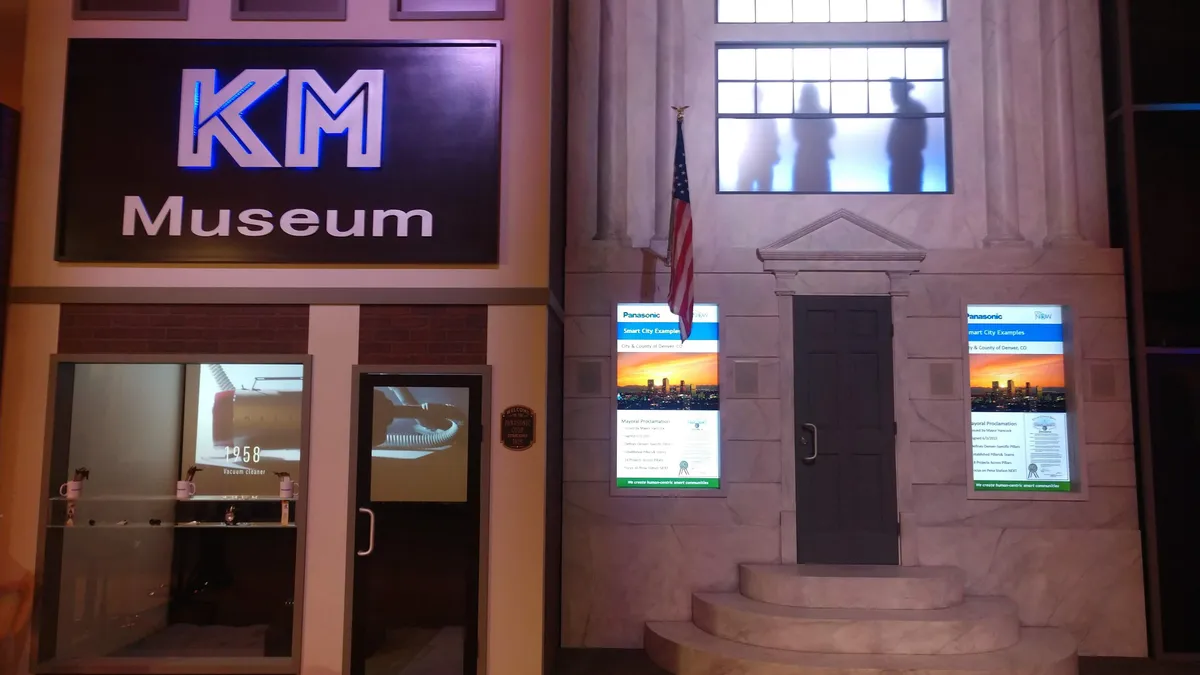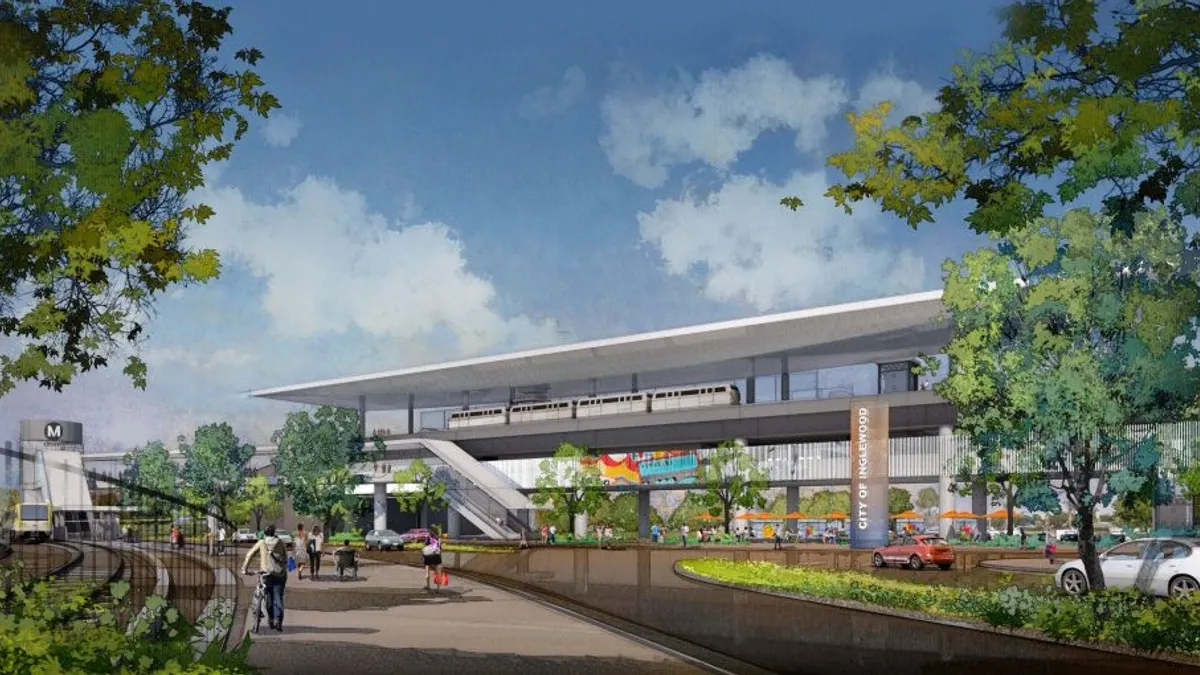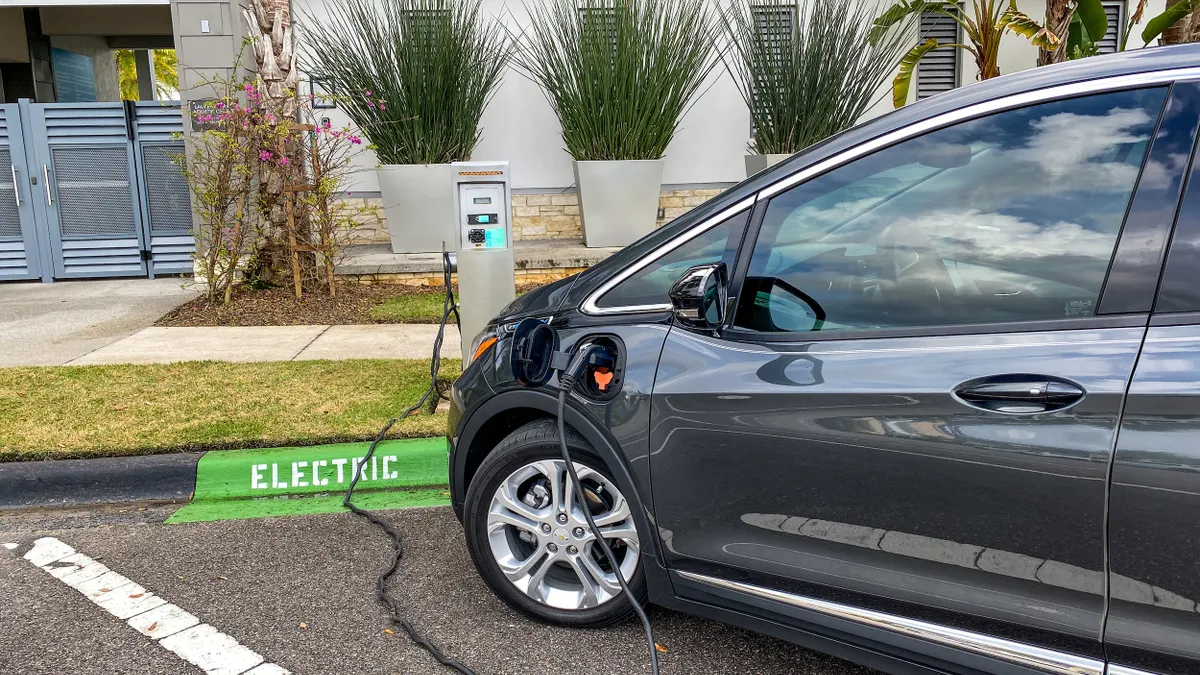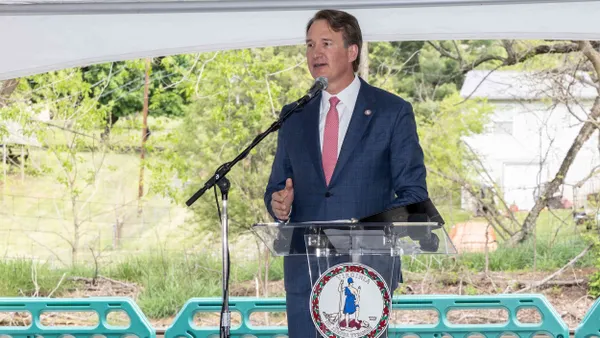DENVER — Stepping into the Panasonic Smart City Showcase in Denver, you might think the entire operation, which covers a city block, is all about showing off the company’s new technology for smart cities.
But with partners including the City and County of Denver, utility Xcel Energy, developer Fulenwider, Denver International Airport and the Colorado Department of Transportation (CDOT), the showcase is about so much more than just technology.
"From our perspective, smart cities are first and foremost about stakeholder alignment,” George Karayannis, executive director of Panasonic CityNow Smart Districts, told Smart Cities Dive during a recent tour of the facility, which opened in March 2018 on Panasonic’s 100th anniversary. "That sounds easy and it sounds obvious, but it's extremely difficult at city scale to get large, complex organizations to define and then agree to pursue collective objectives that we can only do together, and to keep them focused on that over quarters and years."
Inside, the showcase has a "Mobility District," showing off electric vehicle (EV) charging, dockless scooters and other curbside features. It also has a designated "Commercial Business District" with shops, a city hall and a café to help city leaders understand how smart city innovations interact with everyday life. And it has a "Sports and Entertainment District," as well as a 320-square-foot microunit apartment, to show how cities could solve their housing affordability crises by building small yet space-efficient workforce housing.
Streetlight technology is also on display, including solutions on how it can be used as infrastructure to support 5G networks, while a microgrid generates the development’s power and an autonomous shuttle traveling on public streets provides a connection to the nearby commuter rail station.
Karayannis said the showcase, which hosts events and has brought together industry and city leaders to discuss solutions, has become something of a living laboratory and a way for people to experiment with tangible products, not just concepts in a conference room. "We stand shoulder-to-shoulder with them, and it's really proving quite valuable,” he said.
As for major new initiatives, the showcase plays a leading role in CDOT’s push for connected vehicles by building the platform to manage the data generated from those vehicles, analyze it and then push out actionable information to the driver, vehicles and the surrounding infrastructure. Karayannis estimated that connected vehicles will communicate 10 times a second within 300 meters of each other, and all told will generate around 150 petabytes of data, an amount that no cloud provider can yet manage.
Karayannis said Panasonic’s efforts to build this new data platform are "as transformational as anything we have done in our 100-year history," especially as that platform will serve as the operating system for autonomous vehicle (AV) management and could scale up to help vehicles beyond Colorado. "We're running fast and furious to build this,” he said. Nearby, visitors can see through virtual reality (VR) the effect of having widespread connected vehicles by taking a test drive.
While the Panasonic building has power generated from rooftop solar panels as well as other solar panels across the street in a covered airport parking lot, there are bigger ambitions in play. Along with Xcel Energy and the Golden, CO-based National Renewable Energy Lab, Panasonic and its partners hope to roll out the country's first carbon neutral energy district planning tool, which would map energy usage by buildings and help determine where solar panels and storage options could go as developers and cities strive for carbon neutrality in a bid to uphold the goals of the Paris climate agreement.
“How can you have the city, utility and developer at the planning table early on, which is where it never happens, have them do integrated planning so that, as these blocks and districts in cities get developed over the next 30-40 years, we've got a path to make them carbon neutral so cities can deeply decarbonize their built environment,” Karayannis said of the 3D tool.
The smart city showcase is within the larger context of a growing development around a Denver commuter rail station, known as Peña Station Next. The transit-oriented development is set to have new apartments, townhomes and hotel rooms, and take advantage of innovations like the microgrid, smart streetlights and autonomous shuttle.
It is also set to have other initiatives, including a wellness center and strong links to Denver’s network of running and biking trails within a walkable area. The use of technology in partnership with Panasonic is an important part of that, but it is not the only part.
"The concept is really more than technology," Ferd Belz, president of Fulenwider, told Smart Cities Dive. "The concept is the living laboratory, so we continue to work with them and the city and the state and other stakeholders to always try and think about what's next in terms of what's technology that we can look at and incorporate into our project that's going to help our community."
At the bottom of everything, Karayannis said it is imperative to get partners on the same page before everything else can take root. "It sounds so easy and obvious, but it's anything but ... It ain't about shiny stuff," he said.




















